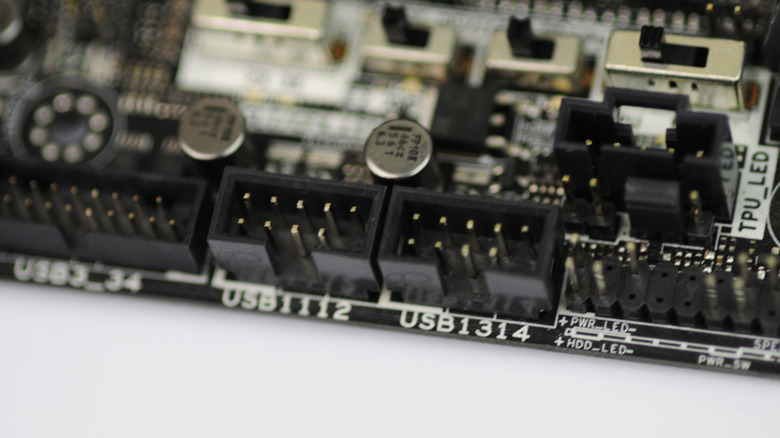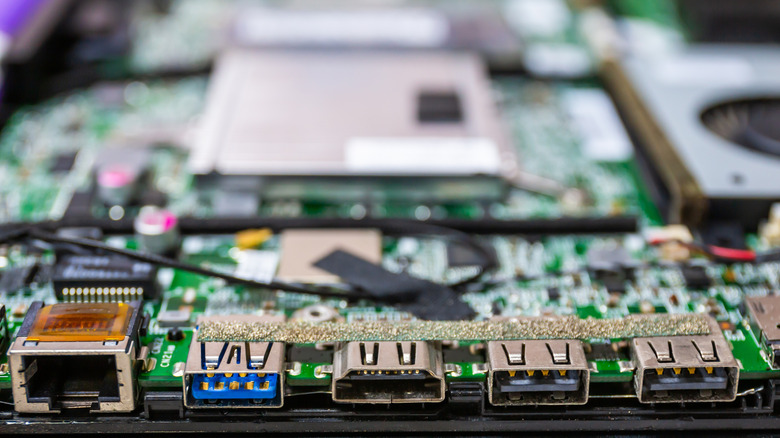What Are USB Headers And How Are They Different From USB Ports?
If you're upgrading or building your own PC, you'll probably find some components inside that are similar in size and shape to USB ports. But those are actually USB headers, and even though they look familiar, they play a completely different role in your system. Knowing what they do can really comes in handy, especially when you're trying to customize or troubleshoot your setup.
USB headers are little connectors on your computer's motherboard that handle the flow of power and data between your USB devices and the PC itself. For example, the seven most useful USB gadgets you can buy on Amazon plug into USB ports, and those ports connect to your PC's motherboard via USB headers. The big difference between headers and ports is that headers are tucked away inside your computer and use a pin-based connection, while USB ports are the ones you actually plug devices into on the outside. One USB header can supply power and data to multiple USB ports.
If you're curious about being able to identify your computer's USB headers, don't worry. The headers are pins that should be clearly marked and if you want to double-check, you can always consult your computer's user manual, or visit the manufacturer's website for more information.
Adding more USB headers allows you to connect more devices
All computers, including the most powerful computers available from every major brand, have motherboards and all motherboards have USB headers. But not all of them have the same types of USB headers. In fact, there are three different common types of USB headers that may be inside your PC or laptop: USB 2.0, USB 3.2 Generation 1 (or just USB 3.0), and USB 3.2 Generation 2. While each one is compatible with any USB device despite the version or generation, each is faster than the previous one, and each has a slightly different looking header on your motherboard.
If you need more USB ports than your computer currently has, you can actually add more, provided you're tech-savvy and know how to do it. But there are restrictions to what you can do, and you may need to buy some hardware to make it happen. You could use an expansion card for your computer's common hardware interface, known as PCI Express. This will allow you to, for example, add USB 3.2 Gen 2 USB-C ports, where your PC might only have USB-A ports built-in.
But if you're just needing a way to connect more USB devices, you can always invest in a USB hub, or even a USB dock. Powered and unpowered USB hubs are available, and both can give you options when you're just wanting to use more devices than what your system can currently accommodate.
Generally speaking, if you just need more of the same kind of USB ports (e.g., regular old USB-A ports), a hub is your best bet. If you need entirely different form factors or newer generations of USB ports, an expansion card is what you need.

